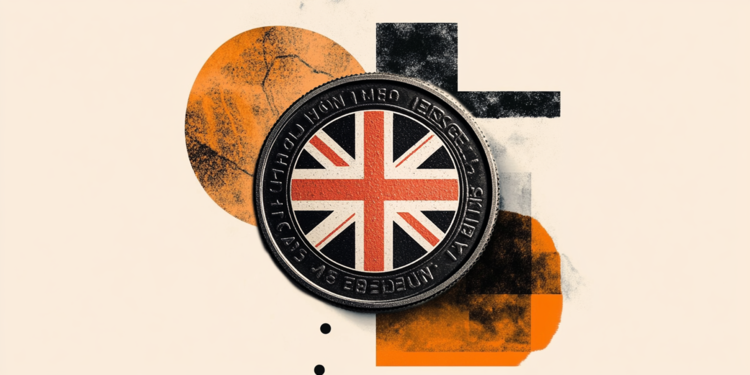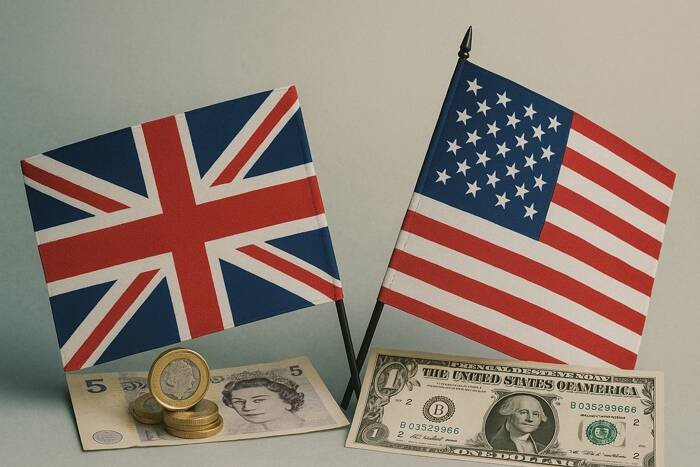The Pound Sterling (GBP) underperforms a majority of its peers at the start of the week. The British currency faces pressure as investors turn cautious ahead of the United Kingdom (UK) Consumer Price Index (CPI) data for September, which will be released on Wednesday.
Investors will closely monitor the UK inflation data to get cues about whether the Bank of England (BoE) will cut interest rates again in the remaining year. The inflation report is expected to show that the core CPI – which excludes the volatile components of food, energy, alcohol, and tobacco – rose at a faster pace of 3.7% on an annualized basis against the prior release of 3.6%.
In the September policy meeting, the BoE anticipated that inflationary pressures would have peaked around 4%.
Signs of price pressures growing at a faster pace would be a drag on expectations supporting more interest rate cuts by the BoE this year. On the contrary, soft numbers would boost the same.
Last week, the confidence of traders that the BoE will cut borrowing rates again this year increased after the release of the UK labor market data for three months ending August, which showed a slowdown in wage growth and a further increase in the jobless rate.
Pound Sterling edges lower against US Dollar amid easing US-China trade tensions
- The Pound Sterling ticks down around 1.3415 against the US Dollar (USD) during the European trading session on Monday. The GBP/USD pair edges lower as the US Dollar (USD) stabilizes on easing trade frictions between the United States (US) and China.
- During the press time, the US Dollar Index (DXY), which tracks the Greenback’s value against six major currencies, trades almost flat around 98.55. However, the US Dollar holds Friday’s recovery move, which came following comments from US President Donald Trump that an additional 100% tariffs on imports from China won’t be sustainable.
- Over the weekend, US President Trump said in an interview with Fox Business that high tariffs were “not sustainable though it could stand”. He further expressed that Washington intends a good relationship with China, and is set to meet Chinese leader Xi Jinping later this month at the Asia-Pacific Economic Cooperation meeting in South Korea. “I think we’re going to be fine with China, but we have to have a fair deal. It’s got to be fair,” Trump said, Bloomberg reported.
- Before the Trump-Xi meeting later this month, investors will focus on the meeting between US Treasury Secretary Scott Bessent and Chinese Vice Premier He Lifeng, scheduled later this week in Malaysia. Negotiators from both nations are expected to discuss export controls announced by Beijing on rare earth minerals, which prompted trade frictions.
- In the US, traders remain confident that the Federal Reserve (Fed) will cut interest rates at least 50 bps in the remaining year. According to the CME FedWatch tool, traders have almost priced in at least a 50 bps reduction in interest rates in the remaining year and see a 4.8% chance that the Fed could cut borrowing rates by 75 bps.
- This week, investors will focus on the delayed US CPI data for September, which will be released on Friday.
Pound Sterling Price Today
The table below shows the percentage change of British Pound (GBP) against listed major currencies today. British Pound was the weakest against the New Zealand Dollar.
| USD | EUR | GBP | JPY | CAD | AUD | NZD | CHF | |
|---|---|---|---|---|---|---|---|---|
| USD | -0.00% | 0.09% | 0.02% | 0.09% | 0.08% | -0.04% | -0.04% | |
| EUR | 0.00% | 0.09% | 0.11% | 0.08% | 0.09% | -0.05% | -0.02% | |
| GBP | -0.09% | -0.09% | 0.02% | -0.02% | -0.02% | -0.14% | -0.12% | |
| JPY | -0.02% | -0.11% | -0.02% | -0.00% | -0.01% | -0.20% | -0.13% | |
| CAD | -0.09% | -0.08% | 0.02% | 0.00% | 0.06% | -0.14% | -0.12% | |
| AUD | -0.08% | -0.09% | 0.02% | 0.00% | -0.06% | -0.14% | -0.10% | |
| NZD | 0.04% | 0.05% | 0.14% | 0.20% | 0.14% | 0.14% | 0.02% | |
| CHF | 0.04% | 0.02% | 0.12% | 0.13% | 0.12% | 0.10% | -0.02% |
The heat map shows percentage changes of major currencies against each other. The base currency is picked from the left column, while the quote currency is picked from the top row. For example, if you pick the British Pound from the left column and move along the horizontal line to the US Dollar, the percentage change displayed in the box will represent GBP (base)/USD (quote).
Technical Analysis: Pound Sterling faces pressure near 50-day EMA
-1760945888810-1760945888813.png&w=1536&q=95)
The Pound Sterling trades in a tight range around 1.3425 against the US Dollar on Monday. The GBP/USD pair strives to return above the 20-day Exponential Moving Average (EMA), which trades around 1.3423.
The 14-day Relative Strength Index (RSI) oscillates within the 40.00-60.00 range, which indicates a sideways trend.
Looking down, the August 1 low of 1.3140 will act as a key support zone. On the upside, the psychological level of 1.3500 will act as a key barrier.
Inflation FAQs
Inflation measures the rise in the price of a representative basket of goods and services. Headline inflation is usually expressed as a percentage change on a month-on-month (MoM) and year-on-year (YoY) basis. Core inflation excludes more volatile elements such as food and fuel which can fluctuate because of geopolitical and seasonal factors. Core inflation is the figure economists focus on and is the level targeted by central banks, which are mandated to keep inflation at a manageable level, usually around 2%.
The Consumer Price Index (CPI) measures the change in prices of a basket of goods and services over a period of time. It is usually expressed as a percentage change on a month-on-month (MoM) and year-on-year (YoY) basis. Core CPI is the figure targeted by central banks as it excludes volatile food and fuel inputs. When Core CPI rises above 2% it usually results in higher interest rates and vice versa when it falls below 2%. Since higher interest rates are positive for a currency, higher inflation usually results in a stronger currency. The opposite is true when inflation falls.
Although it may seem counter-intuitive, high inflation in a country pushes up the value of its currency and vice versa for lower inflation. This is because the central bank will normally raise interest rates to combat the higher inflation, which attract more global capital inflows from investors looking for a lucrative place to park their money.
Formerly, Gold was the asset investors turned to in times of high inflation because it preserved its value, and whilst investors will often still buy Gold for its safe-haven properties in times of extreme market turmoil, this is not the case most of the time. This is because when inflation is high, central banks will put up interest rates to combat it.
Higher interest rates are negative for Gold because they increase the opportunity-cost of holding Gold vis-a-vis an interest-bearing asset or placing the money in a cash deposit account. On the flipside, lower inflation tends to be positive for Gold as it brings interest rates down, making the bright metal a more viable investment alternative.







